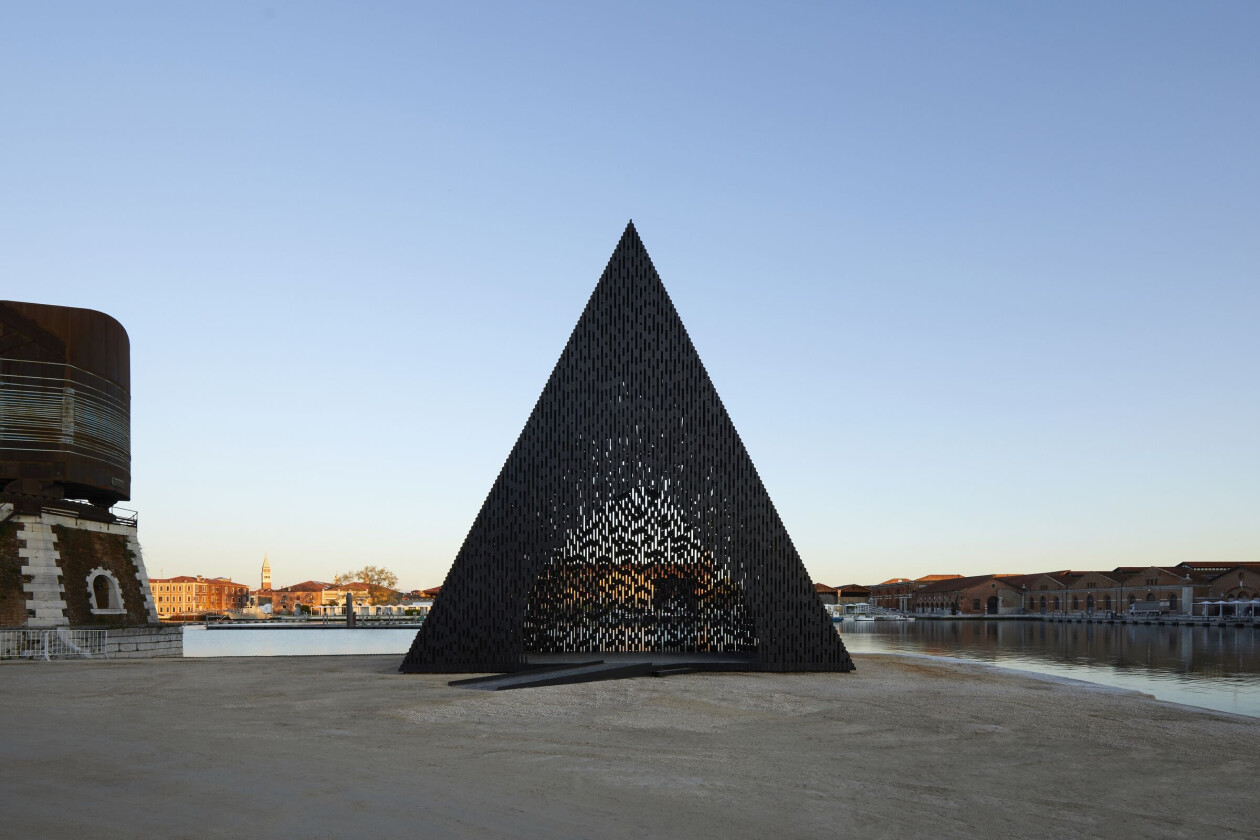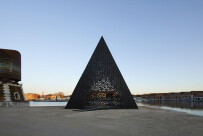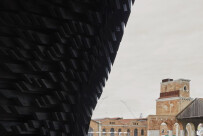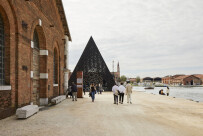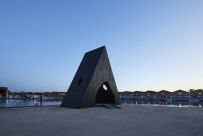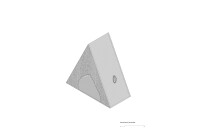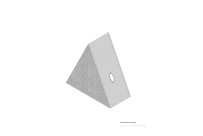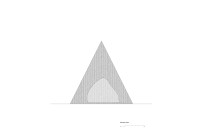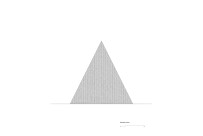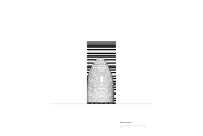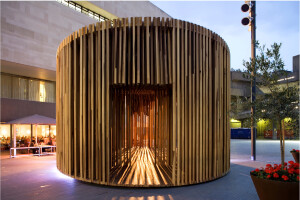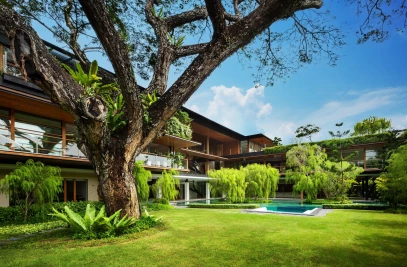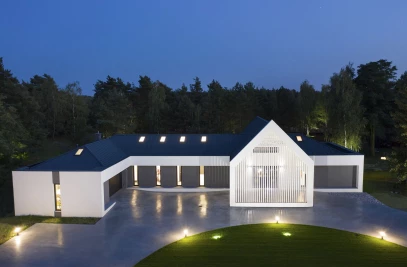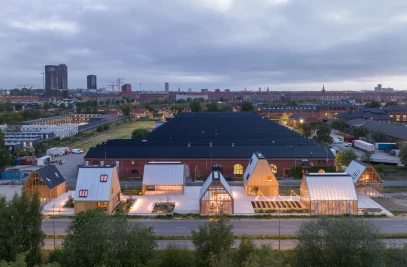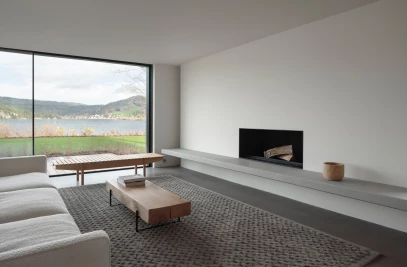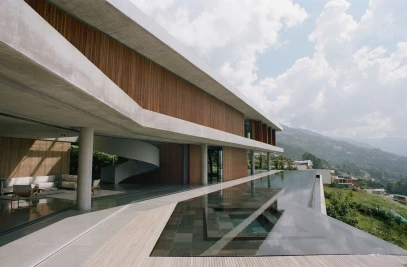Kwaeε is the newest of Ghanaian-British architect David Adjaye’s earth-based social sculptures. On display at the Venice Architectural Biennale 2023, Kwaeε is both a viewing platform and a venue for programmed events.
Kwaeε translates as “forest” in Twi (the language of the Akan people in Ghana and Côte d'Ivoire). Made entirely of wood with a black-stained finish, the sculpture’s striking form and materiality embrace the qualities of its namesake. Kwaeε is designed in the shape of a triangular prism — a 13-meter-tall structure, with an area of 78 square meters, its construction, doorway, window, and platform are amalgamated in one single, unified entity. Internally, the sculpted space “emerges as a distorted ovoid that punctures the form to create a canopied passage for entry and exit [with] two oculi at the north and south elevations,” says Adjaye Associates. Keeping solid surfaces to a minimum, the structure cultivates a “forest of light and shadow,” resulting in a wonderful cave-like atmosphere.
Throughout his extensive body of work, David Adjaye seeks to reflect on and respond to context, community, climate, and culture. Kwaeε’s intended purpose is to serve as a temporal device, one relating to time. “Acting as an inverted sun dial with shadow patterns that track the position of the sun throughout the day, Kwaeε aims to cultivate and renew celestial, human, and cultural connections across time,” says Adjaye. More than a sculpture to be admired and discussed, Kwaeε is a place for community, a space in which to gather and share a connected experience. In Kwaeε, “thematically relevant archival storytelling, music, poetry, recitals, debates, and lectures will be played,” says Adjaye Associates.
Kwaeε is set outside the La Biennale di Venezia's historic Arsenale complex and is described by the architect “as a thematic extension of Adjaye’s parallel exhibitions on view at the Giardini [Central Pavilion].” More than half of the participants at the 18th International Architecture Exhibition are from Africa or the African diaspora. Within the Central Pavilion in the Giardini, “sixteen practices who represent a distilled force majeure of African and Diasporic architectural production have been gathered,” says biennale curator Lesley Lokko. In Adjaye Futures Lab, for example, The Lost Knowledge Systems, a film directed and produced by David Adjaye, “illustrates how the empires of pre-colonial Africa have their own architectural morphology, iconography, and construction methodology.”
As part of a climate of continued renewal, Kwaeε is designed as a modular, prefabricated structure. Adjaye’s intention is that it should be reused and placed at other relevant sites around the world.
